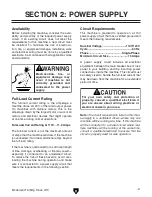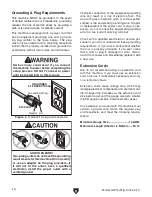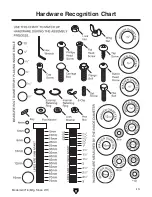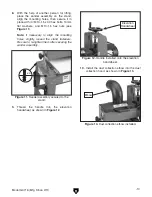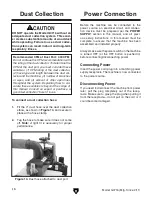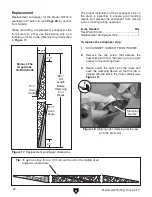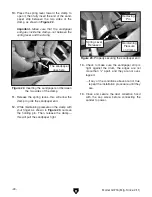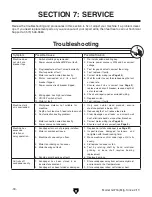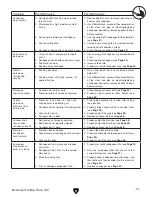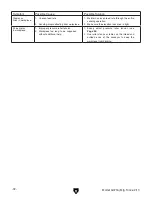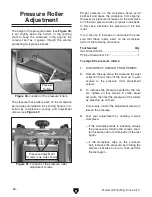
Model g0716 (Mfg. since 2/11)
-21-
Workpiece
inspection
some workpieces are not safe to sand or may
require modification before they are safe to sand.
before sanding, inspect all workpieces for the
following:
•
Material Type:
this machine is intended for
sanding natural and man-made wood prod-
ucts. this machine is Not designed to sand
metal, glass, stone, tile, etc.; sanding these
materials with a drum sander saw may lead
to injury.
•
Foreign Objects:
Nails, staples, dirt, rocks
and other foreign objects are often embed-
ded in wood. While sanding, these objects
can become dislodged and hit the operator,
cause kickback, or damage the machine.
always visually inspect your workpiece for
these items. if they can't be removed, do
Not cut the workpiece.
•
Large/Loose Knots:
loose knots can
become dislodged during the sanding opera-
tion. large knots can cause kickback and
machine damage. Choose workpieces that
do not have large/loose knots.
•
Wet or "Green" Stock:
sanding wood with
a moisture content over 20% causes unnec-
essary wear on the sandpaper and motors,
increases the risk of kickback, and yields
poor results.
•
Excessive Warping:
Workpieces with exces-
sive cupping, bowing, or twisting are danger-
ous to cut because they are unstable and
often unpredictable when being cut. do Not
use workpieces with these characteristics!
•
Minor Warping:
Workpieces with slight cup-
ping can be safely supported if the cupped
side is facing the conveyor belt. on the con-
trary, a workpiece supported on the bowed
side will rock during a cut and could cause
kickback or severe injury.
Sandpaper
Selection
sanding a workpiece smooth requires making
progressively smaller scratches in the wood until
they become too small to feel or be seen.
the abrasiveness of sandpaper is designated
in grit size—the larger the number, the finer the
abrasive and the smaller the scratches. thus, 100
grit is finer than 60 grit.
typically, sanding operations start with a coarse
grit and progressively work through the finer
(larger number) grits until the desired finish is
achieved. avoid skipping a grit to achieve the best
results. Choosing which grit to start and finish with
depends on many factors, such as the workpiece
condition, type and hardness of wood, the desired
finish, and others.
there are many types of sanding belts to choose
from. We recommend aluminum oxide for gen-
eral workshop environments. Below is a chart that
groups abrasives into different classes and shows
which grits fall into each class.
Grit
class
Usage
36
Extra Coarse rough sawn boards,
thickness sanding,
and glue removal.
60
Coarse
thickness sanding
and glue removal.
80–100
Medium
removing
planer
marks and initial fin-
ish sanding.
120–180 Fine
Finish sanding.
NOTICE
Sanding workpieces with high-resin con-
tent or with applied finishes can quickly
contaminate the sandpaper beyond the
point where it can be properly cleaned. this
will produce poor sanding results. in this
case, use a different workpiece, remove
the applied finishes, or frequently clean/
replace the sandpaper strip.



